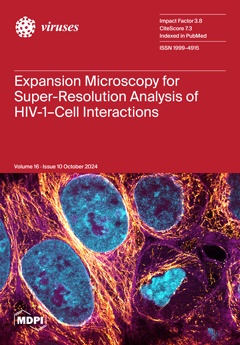Ver ítem
- xmlui.general.dspace_homeCentros e Institutos de InvestigaciónCICVyA. Centro de Investigación en Ciencias Veterinarias y AgronómicasInstituto de VirologíaArtículos científicosxmlui.ArtifactBrowser.ItemViewer.trail
- Inicio
- Centros e Institutos de Investigación
- CICVyA. Centro de Investigación en Ciencias Veterinarias y Agronómicas
- Instituto de Virología
- Artículos científicos
- Ver ítem
Outbreak of Western equine encephalitis virus infection associated with neurological disease in horses following a nearly 40-year intermission period in Argentina
Resumen
Western equine encephalitis virus (WEEV) is a mosquito-borne arbovirus (genus Alphavirus, family Togaviridae) that has re-emerged in South America in late 2023, causing severe disease in both horses and humans after a nearly 40-year intermission period. We here describe the virological, serological, pathological, and molecular features of WEEV infection in horses during the 2023–2024 outbreak in Argentina. WEEV-infected horses developed neurological signs
[ver mas...]
Western equine encephalitis virus (WEEV) is a mosquito-borne arbovirus (genus Alphavirus, family Togaviridae) that has re-emerged in South America in late 2023, causing severe disease in both horses and humans after a nearly 40-year intermission period. We here describe the virological, serological, pathological, and molecular features of WEEV infection in horses during the 2023–2024 outbreak in Argentina. WEEV-infected horses developed neurological signs with mild to severe encephalitis associated with minimal to abundant WEEV-infected cells, as demonstrated by WEEV-specific in situ hybridization. The distribution of viral RNA was multifocal, with predominance within neuronal bodies, neuronal processes, and glial cells in the medulla oblongata and thalamic regions. Phylogenetic analysis of partial nsP4 sequences from three viral isolates obtained from three different provinces of Argentina support grouping with other temporally current WEEV strains from Uruguay and Brazil under a recently proposed novel lineage.
[Cerrar]

Autor
Vissani, Maria Aldana;
Alamos, Florencia;
Tordoya, Maria Silvia;
Minatel, Leonardo;
Schammas, Juan Manuel;
Dus Santos, Maria Jose;
Trono, Karina Gabriela;
Barrandeguy, Maria Edith;
Balasuriya, Udeni B.R.;
Carossino, Mariano;
Fuente
Viruses 16 (10) : 1594 (October 2024)
Fecha
2024-10
Editorial
MDPI
ISSN
1999-4915
Formato
pdf
Tipo de documento
artículo
Palabras Claves
Derechos de acceso
Abierto
 Excepto donde se diga explicitamente, este item se publica bajo la siguiente descripción: Creative Commons Attribution-NonCommercial-ShareAlike 2.5 Unported (CC BY-NC-SA 2.5)
Excepto donde se diga explicitamente, este item se publica bajo la siguiente descripción: Creative Commons Attribution-NonCommercial-ShareAlike 2.5 Unported (CC BY-NC-SA 2.5)


